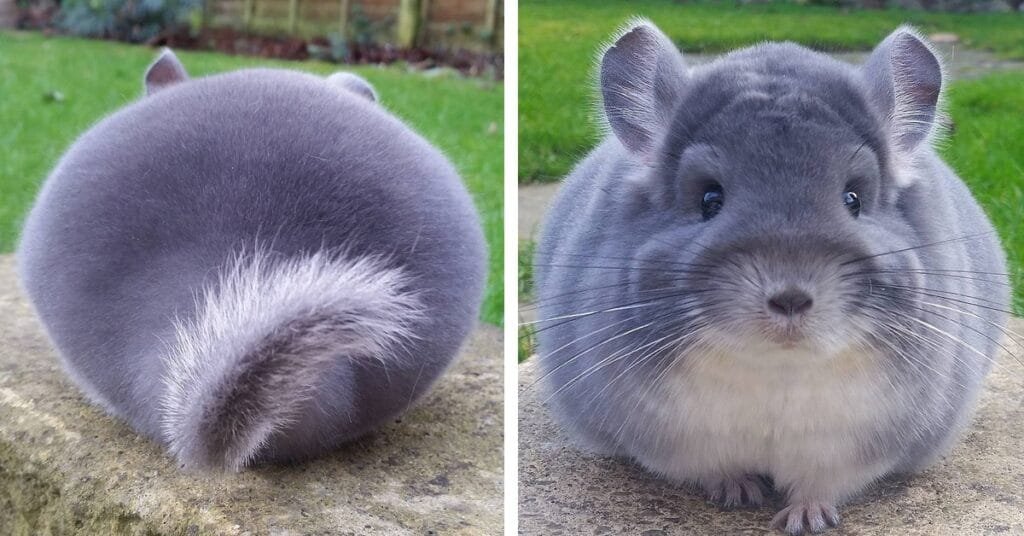Chinchillas are increasingly popular exotic pets, adored for their plush fur, playful nature, and unique characteristics. Native to the Andes Mountains in South America, these small rodents have been domesticated over the years and are now cherished companions for animal lovers worldwide. Despite their popularity, chinchillas require specialized care and an understanding of their unique needs to thrive in a home environment.
This guide covers everything you need to know about chinchillas, from their diet and housing to grooming and health concerns. If you’re considering adopting a chinchilla or already have one, read on to discover how to ensure their happiness and well-being.
What Are Chinchillas?
Chinchillas are small mammals known for their incredibly soft fur, which is often described as the softest in the animal kingdom. In their natural habitat, these creatures live in colonies and use their agility to survive in rocky terrains.
Belonging to the rodent family, chinchillas are social animals with long lifespans—up to 15–20 years in captivity with proper care. Their endearing behaviors, coupled with their minimal odor, make them a favorite among pet enthusiasts.
Why Are Chinchillas Popular as Pets?
Chinchillas are low-maintenance, hypoallergenic pets with playful and gentle personalities. Here are some reasons for their popularity:
- Minimal Odor: Chinchillas produce almost no odor compared to other small animals.
- Low Allergy Risk: They have dense fur but shed minimally, making them suitable for allergy-sensitive owners.
- Long Lifespan: With proper care, they can be lifelong companions.
- Low Noise Levels: Chinchillas are typically quiet, making them ideal for apartments.
Their unique quirks, such as taking dust baths and their ability to leap high, add to their charm. However, owning a chinchilla is a long-term commitment that requires attention to specific needs.
Creating the Ideal Habitat for Your Chinchilla
To keep a chinchilla healthy and happy, creating an appropriate living space is vital. Their enclosure should mimic their natural habitat as closely as possible.
Key Enclosure Requirements
- Size:
Chinchillas need plenty of room to move, jump, and explore. A multi-level cage with platforms is highly recommended. Look for a cage at least 36 x 24 x 24 inches. - Materials:
Choose a cage made of metal with solid platforms, as chinchillas chew almost everything. Avoid cages with plastic elements to ensure safety. - Bedding:
Use dust-free, paper-based bedding or kiln-dried pine shavings. Avoid cedar or pine wood chips, as these can harm your pet’s respiratory system. - Temperature and Lighting:
- Chinchillas thrive in temperatures between 60°F–70°F.
- Avoid high heat and humidity, as chinchillas are highly prone to heat stress.
- Place the cage in a cool, dry, and well-ventilated area away from direct sunlight.
- Accessories:
Include chew toys, hideouts, and climbing branches. A chinchilla wheel with a solid running surface (no mesh or wire) can keep them entertained.
What Do Chinchillas Eat?
A healthy diet is fundamental to your chinchilla’s long-term well-being. Their dietary needs are specific and should be followed strictly to avoid digestive issues.
Components of a Chinchilla’s Diet
- Hay:
The primary component of a chinchilla’s diet is high-quality tobacco or orchard hay. It promotes good digestion and helps to wear down their ever-growing teeth. - Pellets:
Feed chinchillas specially formulated chinchilla pellets, which are balanced for their nutritional needs. Avoid using rabbit or guinea pig pellets, as these can lack essential nutrients. - Fresh Water:
Provide clean, fresh water daily in a sturdy bottle to prevent contamination. - Occasional Treats:
While treats should be limited, you can occasionally give small pieces of apple, rose hips, or plain rolled oats. However, sugary or high-fat treats can lead to health issues.
Grooming Chinchillas: Dust Baths and More
Chinchillas are famous for their dust baths, a fascinating ritual that keeps their fur clean and healthy. Their thick fur traps oils and dirt, so traditional bathing methods (like water baths) are unsuitable for them.
How to Offer Dust Baths
- Dust Type:
Use specialized chinchilla dust available from pet stores. Avoid using sand or other household powders. - Frequency:
Offer dust baths 2–4 times per week, depending on the humidity in your home. Excessive bathing can dry out their skin. - Setup:
Use a deep bowl or chinchilla bathhouse filled with 1-2 inches of dust. Place it in their cage for about 10–15 minutes.
Brushing Chinchillas
While chinchillas do not require frequent brushing, you can gently brush their fur with a soft-bristle brush to remove loose hairs. Be gentle to avoid causing stress.
Chinchilla Behavior and Social Needs
Chinchillas are naturally social animals. Understanding their behavior is essential to ensuring they feel secure in your home.
Key Behavioral Traits
- Activity Levels:
Chinchillas are crepuscular, meaning they are most active at dawn and dusk. They love to jump and climb, so they need adequate stimulation. - Socialization:
While chinchillas enjoy companionship, introducing new ones should be done gradually and under supervision to prevent conflicts. - Handling:
Chinchillas are delicate and do not like rough handling. Support their entire body when holding them and limit handling to prevent stress.
Health and Wellness
Like all pets, chinchillas are susceptible to specific health conditions. Regular care, proper nutrition, and a suitable environment can prevent most problems.
Common Health Issues
- Overgrown Teeth:
- Chinchilla teeth grow continuously, so provide chew toys to maintain proper length.
- Digestive Problems:
- Diarrhea or bloating can occur due to an improper diet. Always follow recommended feeding guidelines.
- Heatstroke:
- They cannot sweat and are prone to overheating. Keep them in a cool environment.
- Fur Slip:
- Chinchillas can shed patches of fur when stressed. Avoid rough handling and provide a calm environment.
When to Visit a Vet
Regular check-ups are vital. Watch for signs of illness, such as lethargy, loss of appetite, or changes in behavior, and consult a vet immediately if needed.
Tips for a Happy Chinchilla
- Provide plenty of enrichment activities, such as chew toys and exercise wheels.
- Spend time bonding with your pet every day to build trust.
- Always supervise interactions if you introduce a second chinchilla.
- Keep their environment clean, including regular cage cleaning and dust bath changes.
Also read: Jodi Sanderholm: A Life Taken Too Soon, Justice Delivered
Conclusion
They are enchanting pets with distinctive personalities and care requirements. By understanding their needs—from housing and diet to grooming and health—you can create a loving environment where they will thrive. Whether you’re a new chinchilla owner or considering adding one to your family, the joy they bring will make the effort worthwhile.
Caring for chinchillas is a rewarding journey that fosters both compassion and responsibility. With the right knowledge and attention, these delightful creatures can become lifelong companions.
FAQs
Are chinchillas suitable for first-time pet owners?
They can be good for beginners willing to learn about their unique care requirements.
How long do chinchillas live?
With proper care, chinchillas can live 15-20 years in captivity.
Can chinchillas live alone, or do they need a companion?
While chinchillas are social, they can live happily alone if given attention and enrichment.
Do chinchillas smell bad?
No, they are naturally odorless and keep themselves clean.
Can you bathe chinchillas with water?
No, they should never be bathed with water. Use specialized dust for bathing.
What toys are safe for chinchillas?
Chew toys made of untreated wood or pumice stones are safe for chinchillas.
How much space does a chinchilla need?
A spacious, multi-level cage with room to jump and climb is essential for their health and happiness.



